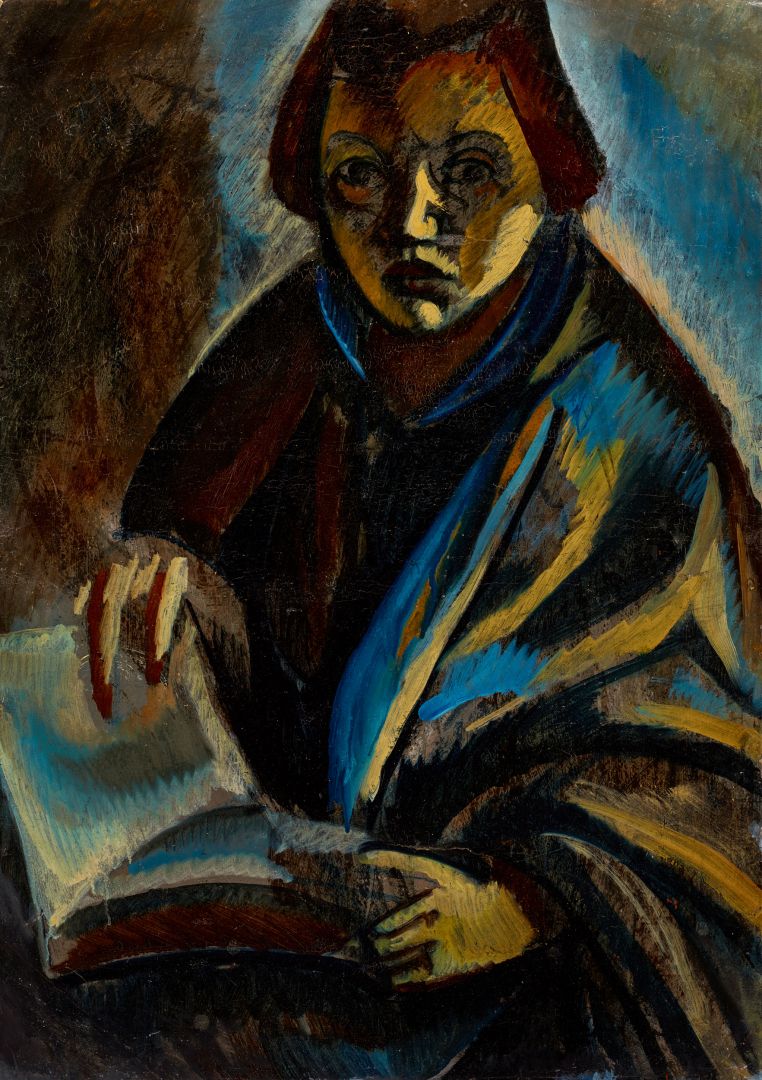Hall 4
Portrait of Mária Bagó
UITZ, BÉLA (1887–1972)
Portrait of Mária Bagó, 1918
oil on paper (mounted on wood-pulp board), 66x47.5 cm; unmarked
Fine Arts Collection, Inv. No.: 75.256.
Béla Uitz was one of the most outstanding artists of the Hungarian Activism movement of the early 20th century. This socially and politically motivated movement that sought to innovate culturally was characterized by its combative mentality and very open minded approach and it was organized by Lajos Kassák from the mid-1910s onwards. The functioning of the Activism movement was hallmarked by the brief run of two journals (titled A Tett and MA, both edited by Kassák), which attempted to convey the effects of European avant-garde art and adapt those locally. Uitz married one of Kassák’s sisters (Teréz) in 1912, which is how the two artists met each other and soon became associates. Kassák introduced his now brother-in-law to the art circles organized around his journals and published several of the expressive, monumental, characterful drawings and art-related writings of his over the years. However, collaboration between the two was not without friction. Like many artists after the fall of the Hungarian Soviet Republic in 1919, both of them immigrated to Vienna, where they finally parted ways in 1922 due to personal and ideological differences.
Uitz’s unique art style, which was inspired by the various ‘-isms’ of the period as well as the painting of József Nemes Lampérth, matured around 1918 through a series of figurative compositions based on people around him. The portrait of Mária Bagó is part of this series, which also serves as another tie to Lajos Kassák and his family, since the model was his eldest sister (she took the family name Bagó after her husband). Although the circumstances of the artwork’s creation are unknown, the viewer gets the impression that the person depicted (the subject of the image) is rendered secondary to the elaborate colours, forms and passionate artistic temperament expressed through the image. The presumably small and frail female figure is depicted in a reserved manner with sombre dignity, modelled with cold colours and dynamic shapes. We see her slightly turned away from the image plane and illuminated from the right side. The left side of the face and body are emphasized, which is visible via her loose and heavily folded cloak. From a compositional perspective, the open book held in the hand of the model is there to offset the head, however it also emphasizes the grim solemnity of her character, taking on the shape of a Sybil. Uitz’s art style in this period is characterized by a subdued, impulsive sense of pathos, which evokes both the memories of classics with its dispassionate and somewhat rigid tranquillity and the readiness of the Activism movement fuelled by the ideas of the period with its robust and instinctively modern expressive force.
The painting was purchased by the Herman Ottó Museum in 1974. It was previously in the possession of painter Elemér F. Antal, who received it from the artist as a gift in 1919.
Ákos Barkóczi
